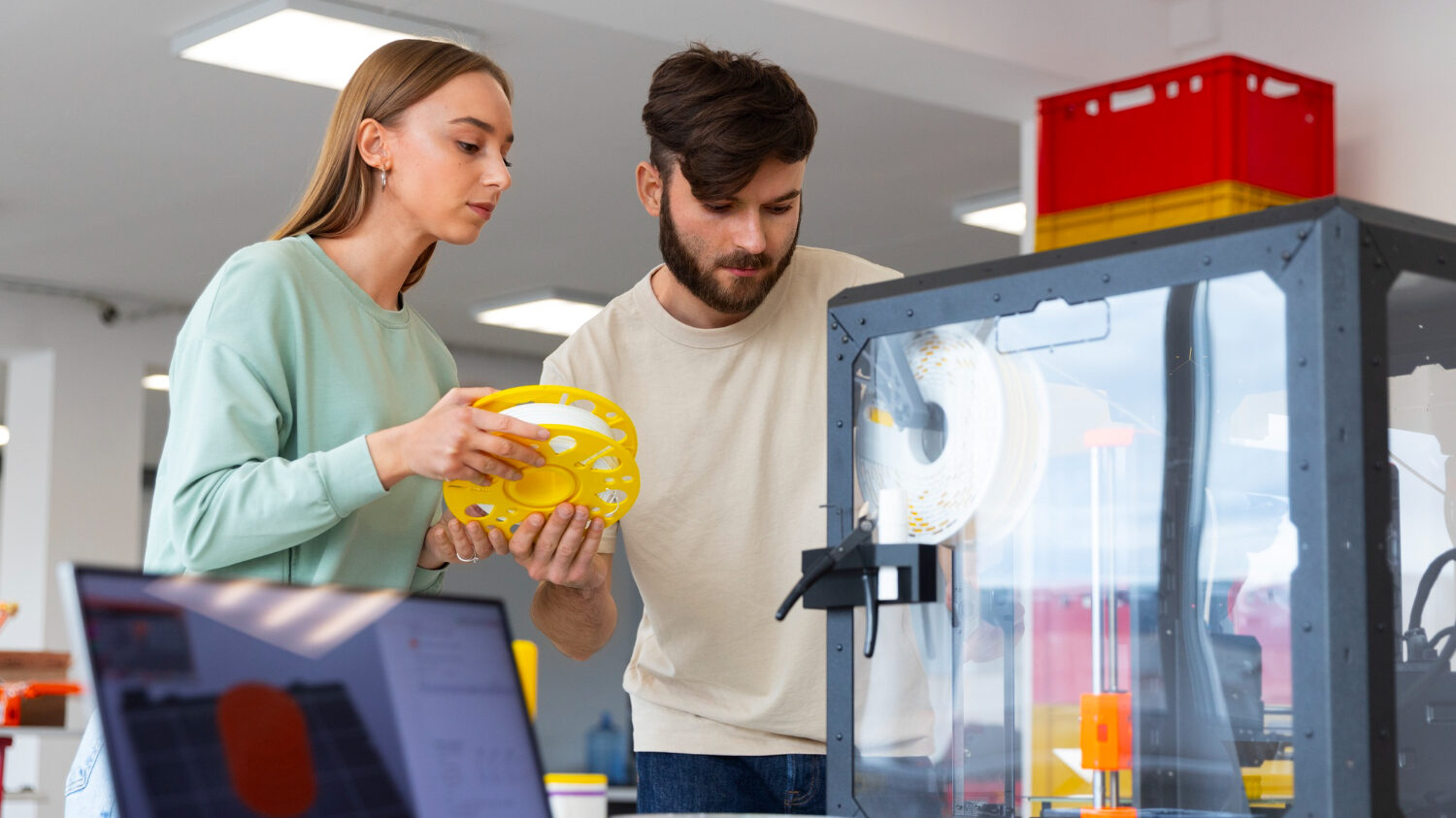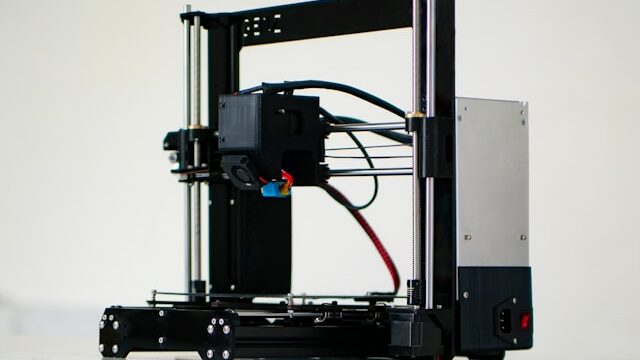You don’t know what to choose between a resin 3D printer and a filament 3D printer, and you need help to make your choice? At Imprimy.com, we are here to guide you based on what will best meet your needs.
To choose a 3D printer, you should know that resin models offer high precision, ideal for fine details, while filament models are more versatile, robust, and suitable for functional parts.

Understanding the different 3D printing technologies
To understand the different 3D printing technologies, you need to distinguish between FDM (Fused Deposition Modeling) and SLA/DLP (resin photopolymerization), each with its own advantages, materials, and specific uses.
What is the definition of 3D printing?
3D printing is an additive manufacturing method that involves creating an object by layering material based on a digital file. It allows the production of customized parts, sometimes with very complex shapes, in a fast and precise way.
This technology uses different types of materials, such as plastic filament or liquid resin, depending on the printer chosen. It is used in many fields, from industry to the general public, including education and design.
What are the main 3D printing technologies?
The main 3D printing technologies are FDM (Fused Deposition Modeling), used for its simplicity and affordable cost, and SLA/DLP, which relies on photopolymerized resin offering high precision.
There is also SLS, which uses laser-melted powder to create solid and durable parts. Each technology has its own advantages depending on the needs for detail, strength, or speed.
Filament 3D printers (FDM)
FDM 3D printers work by depositing molten material, are the most common, affordable, and are suitable for creating solid and functional parts using a wide range of plastic materials.
How does a FDM 3D printer work?
An FDM 3D printer works by heating a plastic filament (such as PLA or ABS) which is then extruded through a nozzle to form the object layer by layer.
The print bed gradually lowers with each new layer, allowing the construction of three-dimensional shapes. This technology is valued for its simplicity, affordable price, and its ability to produce everyday objects or quick prototypes.
What is the cost of an FDM 3D printer?
The cost of an FDM 3D printer varies depending on its quality, size, and features: beginner models start around €150 to €300, while more advanced machines can exceed €1,000.
In addition, there are consumables (plastic filament), which are generally inexpensive. This type of printer remains one of the most affordable on the market.
What is the range of materials available for FDM 3D printers?
FDM 3D printers use a wide range of thermoplastic filaments, the most common being PLA (easy to print), ABS (heat-resistant), PETG (strong and flexible), and TPU (elastic).
There are also technical filaments such as nylon, PC, or composite materials (wood, carbon, metal). The choice of filament depends on the desired mechanical properties and intended use.
Are FDM 3D printers easy to use and maintain?
FDM 3D printers are generally easy to use, especially for beginners, thanks to intuitive interfaces and a large user community. Maintenance is moderate, involving regular tasks like nozzle cleaning, bed leveling, and checking the filament condition.
Their reliability and ease of maintenance make them a popular choice for home or educational use.
What are the common applications of FDM 3D printing?
FDM 3D printing is commonly used for rapid prototyping, creating spare parts, everyday objects, models, or even custom toys.
It is also widely used in education to teach 3D modeling and digital fabrication.
Thanks to its versatility and affordable cost, it fits easily into DIY projects and maker workshops.
Resin 3D printers
Resin 3D printers use photopolymerization to create objects with extreme precision, making them ideal for detailed models such as in jewelry, dental, or figurines. However, they require more handling and post-processing.
How does a resin 3D printer work?
A resin 3D printer works by solidifying a photosensitive liquid resin using a UV light source, typically through SLA (stereolithography) or DLP (digital light projection) technology.
The object is formed layer by layer, with each layer cured by exposure to light. This process allows for high precision and fine details, making it ideal for applications such as jewelry, dentistry, or figurines.
What are the advantages of resin 3D printers?
Resin 3D printers offer very high precision, fine details, and excellent surface quality, making them ideal for applications like modeling, jewelry, or medical use.
They allow the production of complex objects with great fineness and few visible layers.
Their finish is often more professional than that of FDM printers.
What are the main drawbacks of resin 3D printers?
The main drawbacks of resin 3D printers are the delicate handling of materials, which are often toxic and require gloves and good ventilation. Post-processing is essential (alcohol cleaning, UV curing) and can be demanding.
In addition, they generate more waste and require regular maintenance. Their operating cost is also higher than that of FDM printers.
What are the common applications of resin 3D printing?
Resin 3D printers are commonly used in jewelry, dentistry, high-precision prototyping, as well as for creating figurines and detailed models in art or design.
They are perfectly suited for industries requiring objects with fine details and high surface quality.
hey are also used in the production of functional parts that demand high dimensional accuracy.
A direct comparison between FDM printers and resin printers
The direct comparison between FDM printers and resin printers reveals that FDM printers are more cost-effective, easy to use, and produce robust parts, while resin printers offer better precision, a smoother finish, but require more maintenance and post-processing.
What is the cost difference between a filament 3D printer and a resin 3D printer?
Filament 3D printers (FDM) are generally more affordable, with entry-level models starting from €150 to €300, while resin printers often cost between €300 and €1,000 or more.
The cost of consumables is also higher for resin, which requires post-processing. In summary, resin is more expensive to buy and use, but offers better precision.
What is the difference in print quality between a resin 3D printer and an FDM 3D printer?
The print quality of resin 3D printers is generally much higher than that of FDM machines, offering very fine details, smooth surfaces, and high precision.
On the other hand, FDM printers produce objects with more visible layers and lower resolution, but are still suitable for rougher or functional parts.
The choice therefore depends on the desired level of finish and the final use of the object.
What is the difference in 3D printing speed between resin 3D printing and FDM printing?
FDM 3D printing is generally faster for producing simple objects, as it deposits filament layer by layer quickly, while resin printing (SLA/DLP) can be slower, especially for large parts, because each layer must be exposed to UV light to cure.
However, for very detailed objects, resin offers better precision even if it takes more time. The speed also depends on the size and complexity of the object.
Which type of 3D printer offers the best ease of use between FDM 3D printer and resin?
FDM 3D printers generally benefit from better ease of use, with simpler setup, fewer material handling constraints, and easier maintenance.
Resin printers require more precautions for handling toxic resin, post-processing, and more thorough cleaning, making them somewhat more complex for beginners.
Our purchase recommendations
We recommend opting for an FDM printer if you are a beginner, have a small budget, or are looking to create functional parts, and choosing a resin printer if you aim for high precision, fine details, and a professional finish.
What are our purchase recommendations for beginners?
For beginners, it is recommended to choose an FDM 3D printer because of its ease of use, affordable cost, and the availability of a wide range of easy-to-handle filaments like PLA.
You should favor a model with an intuitive interface and a strong community for support. Resin printers are better suited for experienced users seeking high precision despite the more demanding maintenance.
What are our purchase recommendations for professionals?
For professionals, it is advised to choose resin or powder 3D printers depending on the precision and strength requirements of the parts.
Resin printers are ideal for highly detailed objects, such as in jewelry or dentistry, while powder printers are suited for functional and industrial parts.
It is important to prioritize reliable machines with good technical support and the ability to handle technical or composite materials.
Conclusion: Choosing a 3D printer: resin or filament?
Choosing between a resin or filament 3D printer mainly depends on your needs and budget: resin offers exceptional precision and fine details, ideal for professional or artistic applications, while filament is more affordable, easy to use, and suited for rapid prototyping or functional objects.
Each technology has its own advantages and constraints in terms of cost, maintenance, and speed, so it is essential to clearly define your priorities before purchasing.
Picture by Freepik.
The articles published on Imprimy.com are for informational purposes only. They are intended to provide general advice and information related to 3D printing. Imprimy.com cannot be held responsible for the results obtained or the consequences arising from the application of the shared information. We recommend always checking the specific instructions for your hardware and materials before use.


